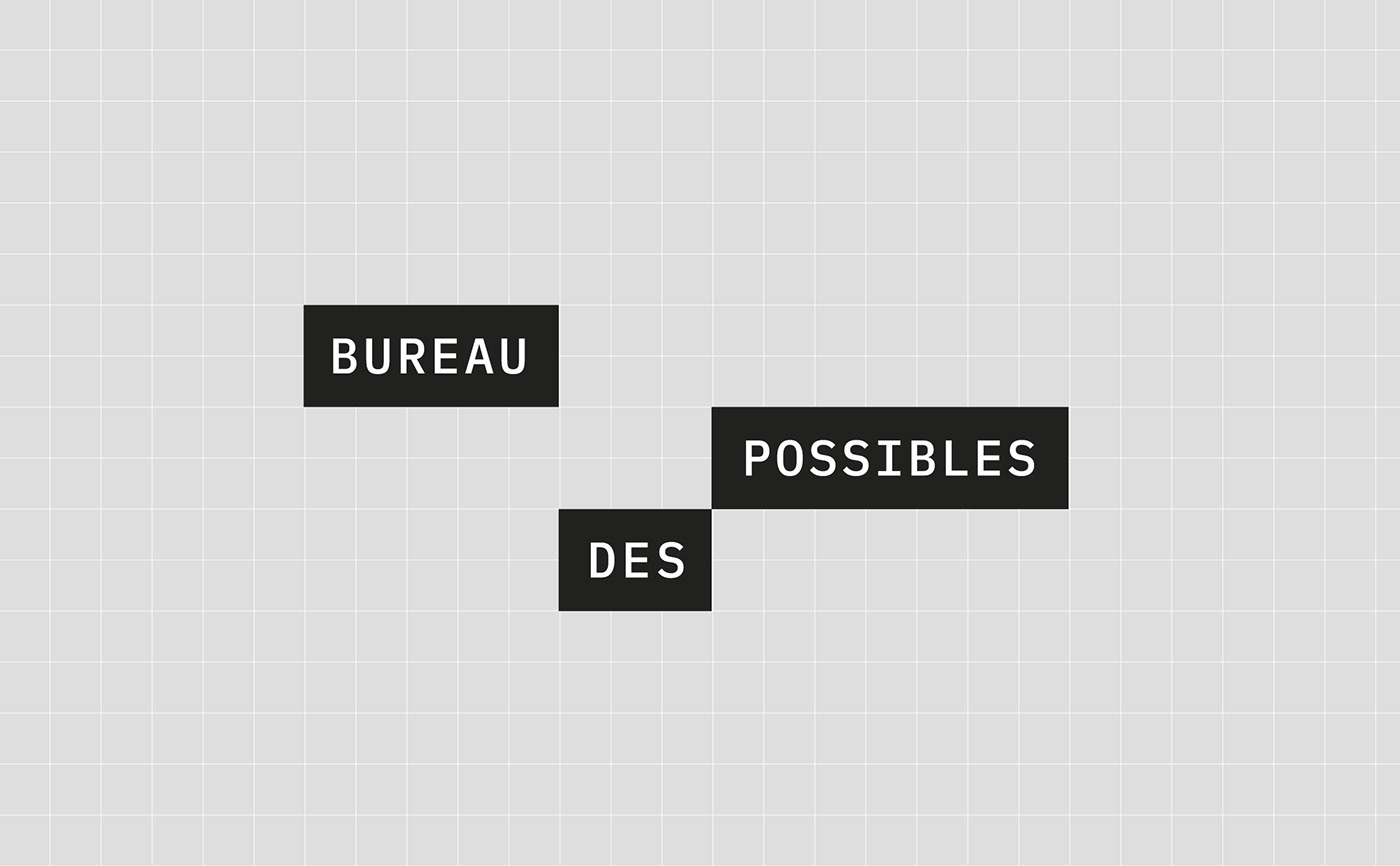
Bureau des Possibles
A generative visual identity
A generative visual identity
Founded by Yves-Armel Martin, Bureau des Possibles (the office of all possibilities) is an agency specialized in collaborative innovation. Their goal is to make the link between the challenges of transforming organizations and the many opportunities of a society in upheaval.
They are convinced that organizations, whether public or private, all have many internal and external resources that are just waiting to bear fruit. They believe that by moving away from vertical organizational modes, deterministic beliefs and the desire to control at all costs, we are opening up to complex approaches and giving way to the emergence of real opportunities. They also run design fiction workshops that allow us to collectively explore the near future and bring back concrete memories of it.
When it comes to design and digital innovation, with them, anything is possible. The visual identity we have designed is fully in line with this logic, it is a generative identity in perpetual motion.

Logo concept
The logo is designed in the spirit of the small "black labels" that could be printed to organize office files. Behind this initial idea, there was the idea of a very simple graphic system, inscribed in a grid, tidy with a little "office spirit". The idea was to create a contrast with the generative visual system. The three blocks of the logo can be articulated in every possible way.





Visual Universe
Originally, we had in mind the flight of starlings, a perfect example of collective intelligence. So we worked to reproduce this effect from any image. A cloud of points is automatically generated and then re-composed ad infinitum.

The generator
You can test the generator at this address:
Fly over the image with your mouse, change "frames", you can even try to upload your own picture. You will then probably have to play with the settings on the right. The "SVG" export module is disabled in this version, but it allows you to export images that can be used in print.
Many thanks to Kevin Vennitti for the development of this module.





